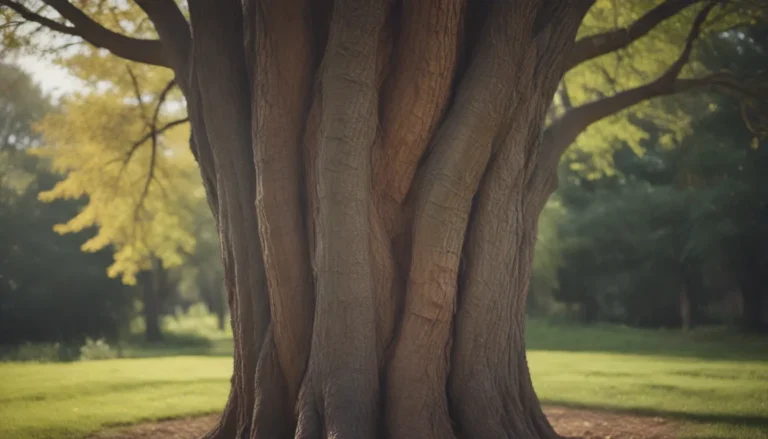Understanding Bradford Pear Tree Leaves: An In-Depth Guide

If you have a Bradford pear tree in your yard, you may have encountered issues with its leaves turning yellow or brown at different times of the year. In this comprehensive guide, we will dive into the various reasons why Bradford pear tree leaves may change color unexpectedly and how you can address these problems to keep your tree healthy and thriving.
Common Issues with Bradford Pear Tree Leaves:
Bradford pear trees are known for their stunning foliage, especially the vibrant crimson red leaves they produce in the fall. However, when their leaves turn yellow or brown during the spring or summer, it can be a cause for concern. Here are some common reasons why Bradford pear tree leaves may change color:
Nutritional Deficiency:
One of the most common reasons for yellowing leaves on a Bradford pear tree is a nutritional deficiency, such as an iron deficiency in the soil. To rule out this issue, it is recommended to get your soil tested by your county extension office. If an iron deficiency is identified, you can use an iron spray treatment on the foliage or add iron to the soil to address the problem.
Watering or Drainage Issues:
Yellow leaves on Bradford pear trees can also be a sign of overwatering or poor drainage. It is essential to ensure that your tree is not receiving too much water, especially if it has clay soil that retains moisture. Improving drainage or aerating the soil can help prevent waterlogged conditions that can lead to yellowing leaves.
Disease:
Diseases such as fire blight and pear scab can also cause brown or spotted leaves on Bradford pear trees. These diseases are typically more prevalent in humid and rainy conditions and can be prevented by planting disease-resistant varieties and practicing proper tree care, such as sanitizing pruning tools.
Addressing Yellow Leaves on Bradford Pear Trees:
If you notice that the leaves on your Bradford pear tree are turning yellow, here are some steps you can take to address the issue and promote tree health:
-
Soil Testing: Get your soil tested to identify any nutritional deficiencies that may be causing the yellowing leaves. Address any deficiencies by applying micronutrient fertilizers or using targeted treatments.
-
Improving Drainage: If poor drainage is the cause of yellow leaves, consider aerating the soil or creating channels to facilitate runoff. Avoid overwatering and water your tree sparingly to prevent waterlogged conditions.
-
Disease Prevention: To prevent diseases like fire blight and pear scab, plant disease-resistant varieties of Bradford pear trees and practice good tree hygiene by removing and destroying affected foliage.
Preventing Yellowing Leaves on Bradford Pear Trees:
While addressing the underlying causes of yellowing leaves on Bradford pear trees is essential, it is also crucial to take preventive measures to ensure your tree remains healthy and vibrant. Here are some tips to prevent yellowing leaves on Bradford pear trees:
-
Planting Time: Avoid planting Bradford pear trees in the summer, as they may struggle to establish roots in the heat. Opt for planting in the spring or fall when conditions are more favorable for root growth.
-
Leaf Scorch: Provide shade or shelter for newly planted trees to protect them from excessive heat and prevent leaf scorch.
-
Insect Control: Keep an eye out for pests like pear psyllas, which can cause yellowing leaves and introduce disease to your tree. Use preventative measures such as spraying petroleum oil to deter egg laying.
By following these tips and addressing any issues promptly, you can ensure that your Bradford pear tree remains healthy and vibrant throughout the year. Remember that proper tree care and maintenance are key to preventing common problems with Bradford pear tree leaves.
Additional Resources:
- University of Wisconsin Extension Service. (https://www.extension.wisc.edu/)
- College of Agricultural, Consumer and Environmental Sciences of New Mexico State University. (https://aces.nmsu.edu/)
- University of Arizona Cooperative Extension. (https://extension.arizona.edu/)
- Clemson Cooperative Extension. (https://www.clemson.edu/extension/)
- Oregon State University Extension Service. (https://extension.oregonstate.edu/)
- Washington State University. (https://extension.wsu.edu/)
- Ohio State University. (https://extension.osu.edu/)
By utilizing these resources and taking proactive steps to care for your Bradford pear tree, you can enjoy beautiful, healthy foliage year-round. Whether you are a seasoned gardener or just starting, understanding the needs of your trees and plants is key to creating a thriving garden environment.
Remember, a little extra care and attention can go a long way in helping your Bradford pear tree thrive and flourish for years to come. So, keep an eye on those leaves, address any issues promptly, and watch your tree transform into a vibrant and healthy centerpiece in your yard.





